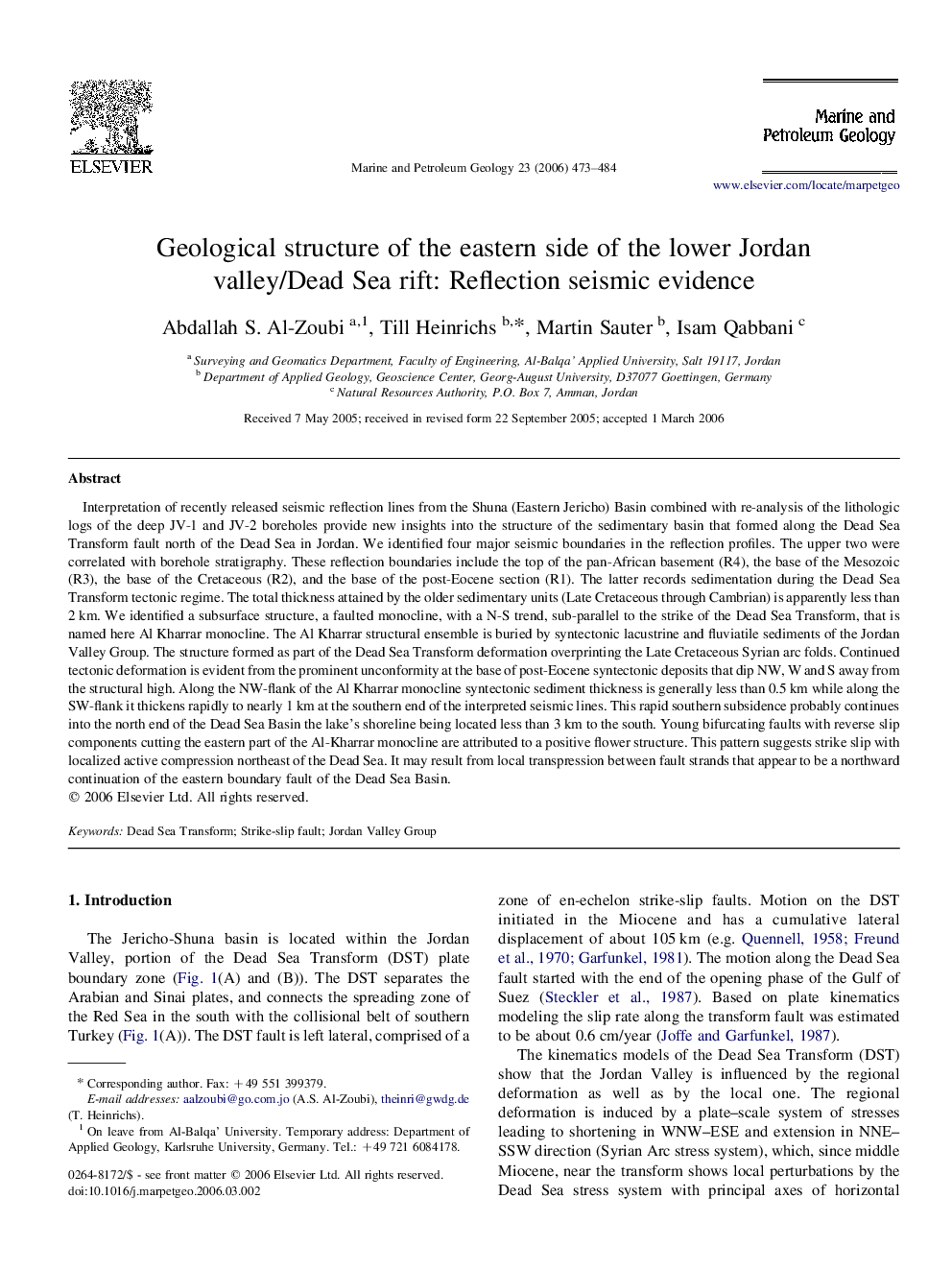| کد مقاله | کد نشریه | سال انتشار | مقاله انگلیسی | نسخه تمام متن |
|---|---|---|---|---|
| 4696724 | 1351709 | 2006 | 12 صفحه PDF | دانلود رایگان |

Interpretation of recently released seismic reflection lines from the Shuna (Eastern Jericho) Basin combined with re-analysis of the lithologic logs of the deep JV-1 and JV-2 boreholes provide new insights into the structure of the sedimentary basin that formed along the Dead Sea Transform fault north of the Dead Sea in Jordan. We identified four major seismic boundaries in the reflection profiles. The upper two were correlated with borehole stratigraphy. These reflection boundaries include the top of the pan-African basement (R4), the base of the Mesozoic (R3), the base of the Cretaceous (R2), and the base of the post-Eocene section (R1). The latter records sedimentation during the Dead Sea Transform tectonic regime. The total thickness attained by the older sedimentary units (Late Cretaceous through Cambrian) is apparently less than 2 km. We identified a subsurface structure, a faulted monocline, with a N-S trend, sub-parallel to the strike of the Dead Sea Transform, that is named here Al Kharrar monocline. The Al Kharrar structural ensemble is buried by syntectonic lacustrine and fluviatile sediments of the Jordan Valley Group. The structure formed as part of the Dead Sea Transform deformation overprinting the Late Cretaceous Syrian arc folds. Continued tectonic deformation is evident from the prominent unconformity at the base of post-Eocene syntectonic deposits that dip NW, W and S away from the structural high. Along the NW-flank of the Al Kharrar monocline syntectonic sediment thickness is generally less than 0.5 km while along the SW-flank it thickens rapidly to nearly 1 km at the southern end of the interpreted seismic lines. This rapid southern subsidence probably continues into the north end of the Dead Sea Basin the lake's shoreline being located less than 3 km to the south. Young bifurcating faults with reverse slip components cutting the eastern part of the Al-Kharrar monocline are attributed to a positive flower structure. This pattern suggests strike slip with localized active compression northeast of the Dead Sea. It may result from local transpression between fault strands that appear to be a northward continuation of the eastern boundary fault of the Dead Sea Basin.
Journal: Marine and Petroleum Geology - Volume 23, Issue 4, May 2006, Pages 473–484